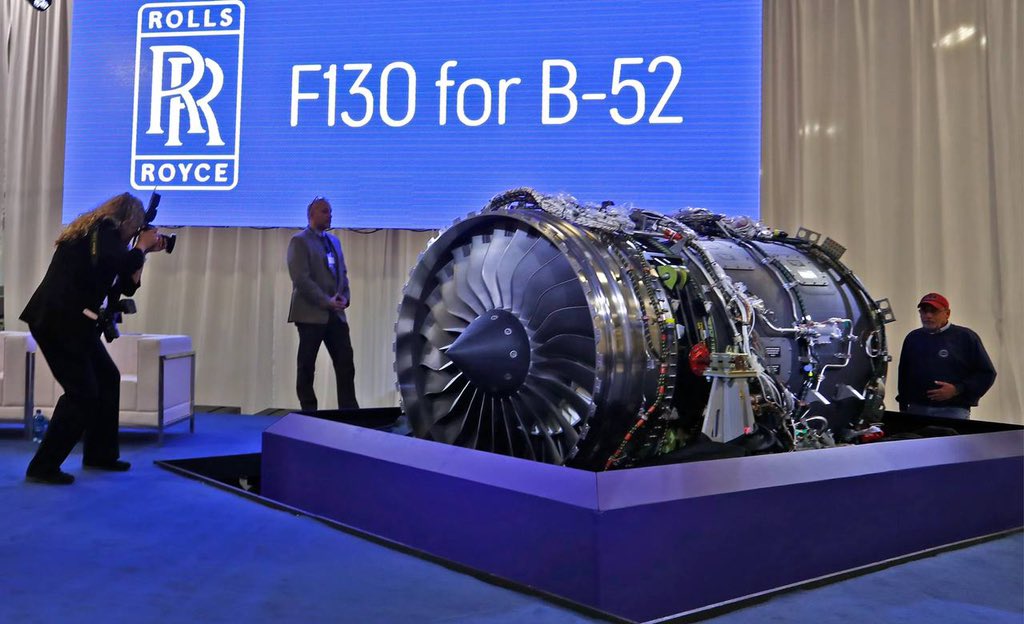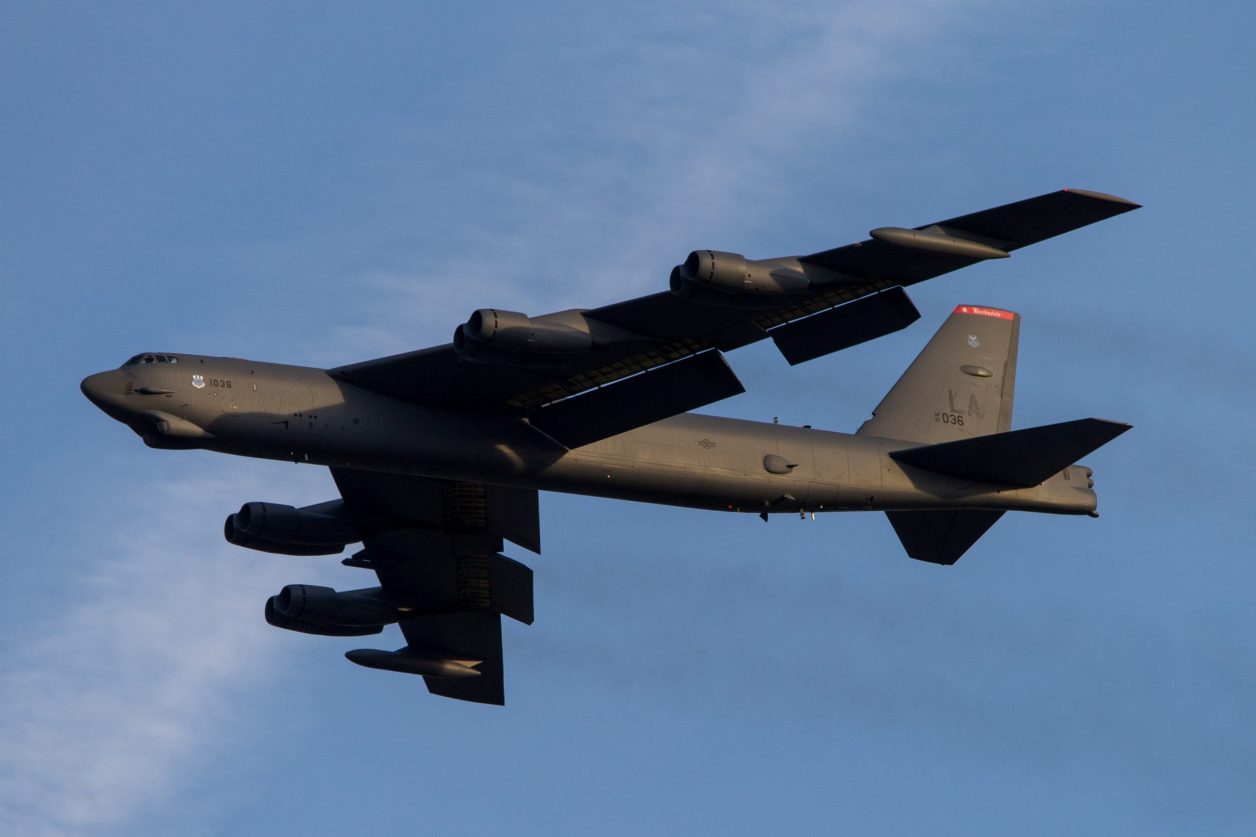Boeing released a video accompanied by an announcement that the B-52 Commercial Engine Replacement Program (CERP) has completed wind tunnel testing using a model of the B-52 Stratofortress.
The CERP is a part of the Pentagon’s $11.8 billion upgrade program for its fleet of B-52 strategic bombers to keep them flying into the 2050s and probably beyond to deter the US’ near-peer adversaries such as China and Russia.
The legendary B-52 Stratofortress nuclear heavy bomber has been a bastion of the US Air Force (USAF’s) bomber fleet since it was first introduced in the 1950s during the height of the Cold War. Seventy-six B-52Hs are still in service, with another 12 in reserve storage.
Of late, the nearly 70-year-old bomber has begun to show signs of aging, but the USAF remains determined to continue to fly the B-52s for decades to come, and as part of that, the aircraft has been going through continuing reforms to stay viable.
Commercial Engine Replacement Program
The B-52’s current Pratt and Whitney-made TF33 turbofan engines need an overhaul after every 6,000 flight hours, which according to an estimate in 2016, the USAF must spend $2 million per engine.
In September 2021, Rolls-Royce North America was selected to supply the replacement jet engines for the Cold War-era B-52 bomber. The USAF decided after Rolls Royce’s F130 beat GE Aviation’s CF34-10 and Pratt & Whitney’s PW800 in a competition known as the ‘Commercial Engine Replacement Program’ (CERP).
One of the concerns was that if new pylons were needed for mounting the new engines, that would involve a costly re-engineering of B-52’s wings.

Therefore, to save the costs, the USAF required the companies competing for the re-engining deal to submit proposals that could leverage the aircraft’s four existing underwing engine pods, each of which holds two existing TF33 engines.
Tom Bell, President, and CEO of Rolls Royce North America revealed last year that Rolls Royce’s proposal called for modifying the wing “as little as possible” to reduce the risks.
The video released by Boeing on Twitter features a 4% scale model of the B-52, installed inside the company’s transonic wind tunnel, where it has been subjected to the said test at a maximum speed of Mach 0.92.
We predict a windy forecast this #B52sday at #ASC22. ?
The #B52 Commercial Engine Replacement Program completed wind tunnel testing using similar models used by engineers in the 1950s to collect data for future flight tests. This ensures the new engines will work as expected. pic.twitter.com/33JYrx7jbD
— Boeing Defense (@BoeingDefense) September 20, 2022
The four-engine pods, comprising two nacelles each that will house a total of eight Rolls-Royce F130 engines, can be seen in the footage.
The F130 engines will be significantly more fuel-efficient and maintenance-friendly, Mike Seltman, an aerodynamics engineer at Boeing, explained in the video.
“The new engines are larger, so we have bigger nacelles, which brings us closer to the wing and brings up interesting aspects in controllability, which is why we’re doing the wind tunnel test: to make sure we have all of that covered,” Seltman said.
The contract between the USAF and Rolls-Royce outlines an initial $500 million six-year deal which could rise to $2.6 billion if all options are exercised. The company would produce 608 F130 engines to replace all eight TF33 engines on the 76 B-52Hs and 42 spare units.

Other Upgrades To B-52 Bomber
Apart from the new F130 engines, the B-52 will also undergo the Radar Modernization Program. The Cold War-era bomber will receive a new, more capable Raytheon AN/APG-79 radar used by the US Navy’s F/A-18E/F Super Hornets.
As reported by EurAsian Times, the Raytheon AN/APG-79 AESA radar will involve changes to the B-52’s cooling systems, for which the radar will be placed upside down, unlike the Super Hornet’s vertical posture, allowing it to scan the ground.

The “fighter-quality” radar is expected to provide the B-52 with excellent air-to-ground detection, range, tracking, and precise weapons delivery and fire-control capability.
While the engine and radar replacement are certainly critical upgrades for the B-52, the USAF is also engaged in efforts to add systems and subsystems that will enhance the capability of this strategic bomber.
This includes the service’s plan to replace the Global Iridium Bomber Set (GLIBS), which has been in operation since 2017, with the new IRIS system, as discussed in a previous report by EurAsian Times.
The IRIS is a new beyond-line-of-sight communication (BLOS) system and Air Force Global Strike Command’s (AFGSC) solution for integrating the B-52 fleet into the greater Joint All-Domain Command and Control problem set.
It offers complete global coverage by leveraging the Low Earth Orbit (LEO) Iridium NEXT satellite constellation.
B-52 To Fly For A Century
Despite its age, the B-52 remains the USAF’s leading strategic nuclear and conventional weapons platform. It can carry more weapons than any other USAF jet and fly long-range missions from bases in the Pacific.
Therefore, these bombers are deployed widely by the USAF for various missions despite having the B-1 Lancer and the B-2 Spirit in their inventory.

The bomber can fly at high subsonic speeds at altitudes of up to 50,000 feet (15,166.6 meters) and carry 32,000 kilograms of nuclear or conventional weapons with top-class precision navigation capability.
While the B-52 does not possess the advanced stealth features such as that of the USAF’s underdevelopment B-21 Raider, it can fire new hypersonic weapons that the service plans to field by 2027, which is essential considering the B-21 is not expected to undertake its first flight until next year and will not enter service before 2030.
That said, adding new F130 engines to the B-52Hs is one of the most significant upgrades these aircraft have received and will enable the USAF to keep flying the bombers through 2050 — roughly 100 years after the first B-52 was flown.
“I never thought it would be flying this long,” said Mark Gunzinger, a former Pentagon official and a director at Mitchell Institute for Aerospace Studies, a think tank. He said he had logged more than 3,000 hours on the B-52.
The first group of modified B-52s is expected to be delivered by the end of 2028.
- Contact the author at tanmaykadam700@gmail.com
- Follow EurAsian Times on Google News




